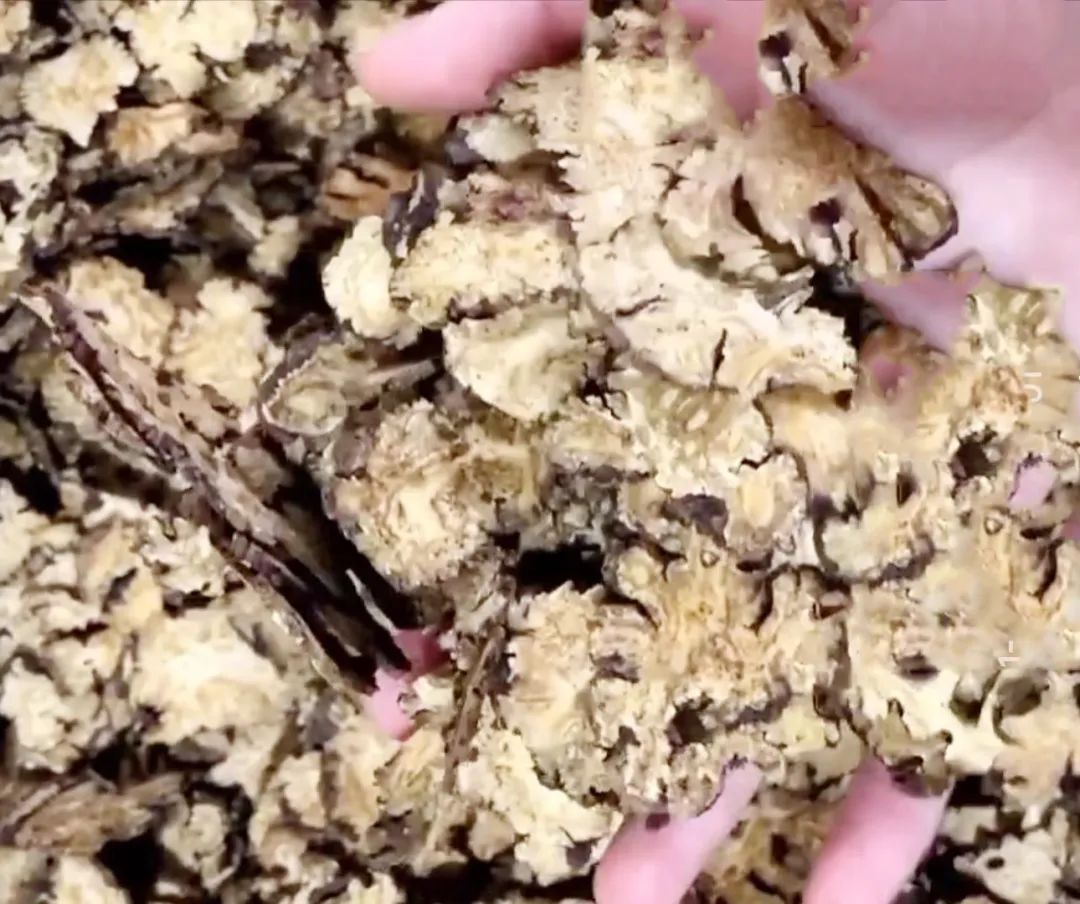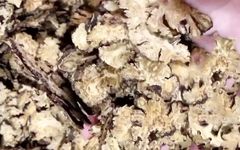

Chuanxiong (Ligusticum chuanxiong), a cultivated plant of the Apiaceae family, has a developed rhizome that forms irregular, nodular, fist-shaped clumps. The stem is erect, cylindrical, and has longitudinal stripes; the upper part is highly branched, while the lower part has swollen nodes that appear disc-shaped. The flowering period is from July to August, and the immature fruit period is from September to October. Chuanxiong has a strong and distinctive aroma, with a bitter, spicy taste and a slight sweetness, accompanied by a tingling sensation on the tongue.

Properties and Channels:
Flavor: Spicy; Nature: Warm; Channels: Liver (Gan), Gallbladder (Dan), Heart (Xin); Aroma: Ascending and dispersing.
Functions and Indications:
Invigorates blood circulation and promotes qi flow, dispels wind, and alleviates pain.
Clinical Applications:
Used for chest obstruction and heart pain, stabbing pain in the chest and hypochondria, pain and swelling from falls, irregular menstruation, dysmenorrhea, abdominal pain from masses, headaches, and rheumatic pain.


The main production areas of Chuanxiong are concentrated in the Chengdu Plain sub-region of the central hilly plain area of the Sichuan Basin, including Dujiangyan, Pixian, Pengzhou, Xindu, Chongzhou, and Shifang. To promote the development of the Chuanxiong industry and expand its cultivation scale, Wang Yu and others used Dujiangyan in Sichuan as a base county for authentic medicinal materials of Chuanxiong, employing a self-developed “Geographic Information System for Analyzing the Suitability of Medicinal Material Production Areas” to analyze suitable production areas for Chuanxiong nationwide.
Results indicate that, based on the ecological conditions required for the growth of Chuanxiong, such as temperature, rainfall, altitude, and soil type, in addition to the traditional production areas in Sichuan, the eastern regions of Sichuan, parts of Hubei, Guizhou, and Shaanxi are also suitable production areas for Chuanxiong. The climate, temperature, rainfall, and sunlight in these regions are conducive to the growth of Chuanxiong, making them suitable for its production.
Due to the cultivation of Chuanxiong in mountainous areas and the introduction of Chuanxiong in many regions such as Fuzhou, successful cultivation measures for high-quality and high-yield have been explored. However, due to the higher temperatures and lower altitudes of the introduced areas compared to the original planting areas, seed retention has been hindered, thus restricting the development of Chuanxiong locally.

Chuanxiong is a perennial herbaceous plant of the Apiaceae family, growing 40-60 cm tall, with a developed rhizome that forms irregular, nodular, fist-shaped clumps, and has a strong aroma. The above-ground stems are clustered, erect, cylindrical, and have longitudinal stripes; the upper part is highly branched, while the lower part has swollen nodes that appear disc-shaped (rhizome). Generally, a single plant can have 17-25 stems, with some reaching over 40. The lower leaves have petioles that are 3-10 cm long, with the base expanded into a sheath; the leaf blades are ovate-triangular, measuring 12-15 cm long and 10-15 cm wide, with 3-4 times pinnate lobes, and 4-5 pairs of lobules that are ovate-lanceolate. The leaf color is green or yellow-green, measuring 6-7 cm long and 5-6 cm wide, with the terminal lobes being linear-lanceolate to oblong, measuring 2-5 mm long and 1-2 mm wide, with a small pointed tip; the upper leaves gradually simplify, and the young leaves and veins on the upper part of the stem have short soft hairs, while the older leaves in the middle and lower parts of the stem do not have soft hairs. The number of leaves on Chuanxiong is relatively high, with the number of leaves on a single plant generally reaching 50-65, and some plants exceeding 100 leaves.
The flowers of Chuanxiong belong to compound umbellate inflorescences, which can be terminal or lateral; the involucre has 3-6 linear bracts, measuring 0.5-2.5 cm long; the umbel rays are 7-24, of unequal length, measuring 2-4 cm long, with the inner side being rough; the small involucre has 4-8 linear bracts, measuring 3-5 mm long, and is rough; the calyx teeth are undeveloped; the petals are white, ovate to heart-shaped, measuring 1.5-2 mm long, with a small pointed tip that folds inward; the ovary is conical, with 2 styles, measuring 2-3 mm long, and curved downward.
The immature fruit is flattened on both sides, measuring 2-3 mm long and about 1 mm wide; there are 1-5 oil ducts in the dorsal groove, 2-3 oil ducts in the lateral grooves, and 6-8 oil ducts on the fused surface. The flowering period is from July to August, and the immature fruit period is from September to October.


Chuanxiong prefers a mild climate with abundant rainfall, sufficient sunlight, and a relatively humid environment. However, during the cultivation phase and storage period of Chuanxiong, cooler climate conditions are required. The growth period is 280-290 days. In flat areas, it is advisable to choose deep, loose, fertile, well-drained sandy loam with a rich organic matter content, neutral or slightly acidic.


